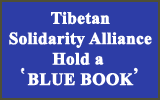Whether monastic or layperson, all Tibetans should pay attention to Buddhist tradition and culture

Dharamshala: The millennia-old Tibetan Buddhist tradition has immense potential to contribute to peace in the world, His Holiness the Dalai Lama said, as he entrusted Tibetans, monastic and lay, to pay attention to preserve Tibetan culture and Buddhist tradition.
He was giving a teaching on the Heart Sutra, Je Tsongkhapa’s “Praise to Dependent Origination” and Kamalashila’s “The Middle Stages of Meditation at the National Convention Hall of Yokohama, Japan. More than 5000 devotees attended the teaching at the Pacifico Yokohama National Convention Hall.
“Tibetan Buddhism is the most authentic tradition of Nalanda. For centuries, the illustrious forefathers and scholars of Tibet have contributed lifelong in producing a vast literary corpus of Buddhist knowledge involving a prodigious amount of labour and perseverance.
“We can be proud to have preserved this tradition for more than 1000 years and arm ourselves with courage and determination to preserve this rich tradition.
His Holiness spoke admiringly of the progress achieved in the field of Buddhist study with the introduction of the study of Buddhist philosophy in all monastic institutes and nunneries.
“While reviving Buddhist institutes in exile, I encouraged monks and nuns to pursue the study of Buddha’s teachings and commentaries, the root texts and the five great treatises. Today all monastic centres have begun to employ rigorous study of the Buddhist philosophy.
He added, “Buddha had given equal opportunity to both men and women to pursue the study of this tradition. Accordingly, I have encouraged nuns to pursue the highest scholarship in the study of Buddhist philosophy just as monks.” In 2016, a batch of 20 Tibetan Buddhist nuns became the first in the history of Tibetan Buddhism to receive the Geshema degree, the highest academic title in Tibetan Buddhism. The degree is conferred after at least 17 years of rigorous study of the five main Buddhist texts, combined with a regular session of prayers and recitations.
Over the introductory teaching, His Holiness repeatedly stated that the Tibetan tradition is derived from the pure lineage of the Nalanda tradition.
“Buddhism was established in Tibet in the 8th century when the Tibetan Dharma King Trisong Detsen invited Shantarakshita, one of the top scholars from Nalanda and Kamalashila a scholar of epistemology. The Nalanda tradition flourished and Tibet became the only Buddhist country which has successfully preserved the Nalanda tradition and the use of reason and logic.
“As a tradition based on reason and which does not presuppose blind faith, the Nalanda tradition is the only among world traditions that are fully compatible with modern science,” he said, drawing distinct lines between the Buddhist philosophy originating from Nalanda and religious aspect.
His Holiness spoke about pioneering the dialogue series between modern scientists and Buddhist scholars from late 80s, adding that the exchange has been fruitful and mutually enriching.
Tomorrow His Holiness will bestow Avalokiteshvara empowerment to the devotees.






